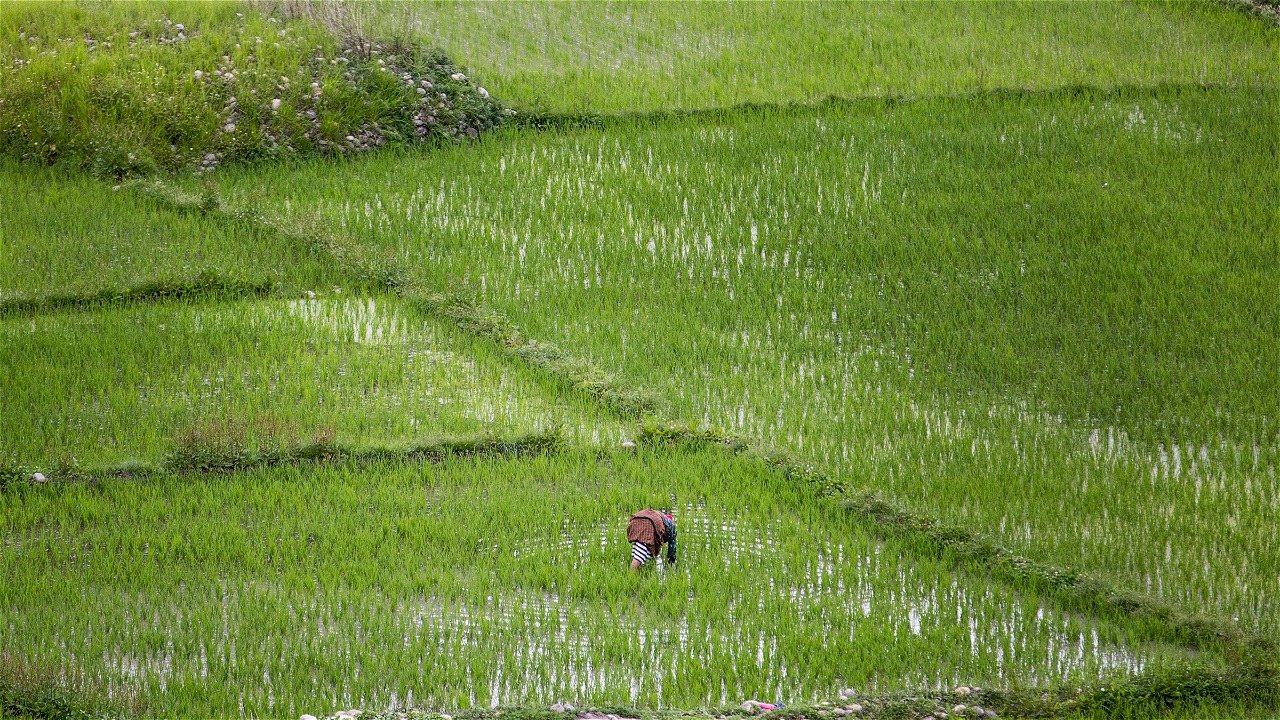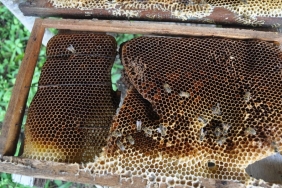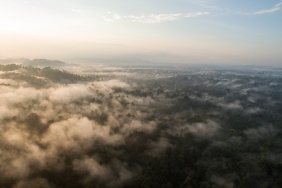1.2 MILLION HA OF MERAUKE LAND FOR NATIONAL FOOD BARNS
President Jokowi on May 9, 2015 came to Merauke to conduct a harvest on rice fields managed by PT Parama Pangan Papua (PPP) in Wapeko. On that occasion, the President also proclaimed Merauke to be the center of national rice food production or known as the "national food barn" within 3 years with a land coverage of 1.2 million ha. With this area, it is estimated that rice production will be obtained 24 tons per hectare per year, so that overall it will produce around 24 million tons per year. This amount is equal to 30% of national rice production (national rice production is 70.83 million tons per year).
The policy and declaration of the program received both pro and con responses. Much criticism was delivered by community groups, community observers and environmental activists. Whether there is certainty that the community will benefit and improve their welfare from this policy is the main thing that is questioned. Also in the spotlight is how to find the land area to meet the 1.2 million ha figure, will it utilize forest land and idle land? Then how to involve the role of indigenous peoples as voters of customary rights?
Located in the Hall Room - Megaria Hotel - Merauke, on June 18, 2015, the Merauke Regency Government in collaboration with Yasanto, PUSAKA and WWF Indonesia- Site Merauke held a public discussion to answer the questions above as well as motivate all levels of society to actively participate in the success of government policies to make Merauke a national food producer.
In his remarks at this discussion event, the Regent of Merauke, represented by Assistant I for Government Affairs, Drs. Agustinus Joko Guritno, M.Si, stated, "this policy was made by the Merauke Regency Government which has been accepted as a national policy for the welfare of the community. The policy of making Merauke a national food barn is intended for the welfare of the community, it has been calculated technically for the welfare of the local community or anyone involved. The activities carried out are positive to make the government even better in making community service programs."
However, one of the topics in this public discussion is that before the 1.2 million ha land clearing policy is implemented, it is necessary to analyze the availability of space so that there is no space conflict. As is known that previously Merauke Regency has been designated as the center of food and energy development or known as "Merauke Integrated Food and Energy Estate-MIFEE". In accordance with the spatial pattern of Merauke Regency, the land area of Merauke Regency is 4,670,163 ha. Of this area, 2,455,694 ha has been allocated for protected areas and 1,598,822 ha for investment purposes. This area was previously allocated to support the national interest in making Merauke Regency the center of the MIFEE program.
WWF Indonesia-Papua Program Director, Benja V. Mambai explained, "the fundamental question is whether the 1.2 million ha policy for national food barns will directly replace the MIFEE policy and use land allocations that were previously allocated to support its implementation? This is not yet clear. WWF has been focusing on surveying the availability of indigenous peoples' management space and water availability. This is important and there should be no overlap in land use, especially in relation to customary use and conservation areas. So it needs a lot of consideration for implementation."
One of the community leaders of Malind Anim, Jhon Gluba Gebze said, "It should not only be the land area target that is pursued. It is better to pursue productivity targets from existing land. Currently, farmers in Merauke Regency harvest once a year with a productivity of 3 tons/ha. So with the improvement of the irrigation system and the provision of fertilizers, it is expected that the harvest can be done 3 times a year with a productivity of 7-8 tons/ha. If this can be done, it is not impossible that the target of making Merauke Regency a national food barn can be met."
From the overall results of the resource person's exposure and responses from the activity participants, the implementation of the Merauke Regency program as a national food barn needs to get a more comprehensive study, socialization to all parties, involvement of the active role of indigenous peoples, and mapping of customary lands by the government. Furthermore, the government is also expected to guarantee the fulfillment of the rights of indigenous peoples by the private sector (companies) and become a mediator between companies and the community.
As a form of follow-up steps, assistance to indigenous peoples is the main focus. In addition, efforts to strengthen civil society networks related to modern food investment in Merauke are also included in the important agenda. Related to this follow-up plan, WWF in this case the Merauke site office is appointed as 'noken or wat (in Malind language)', which is as a 'container' where information is collected and follow up reports from the community.





